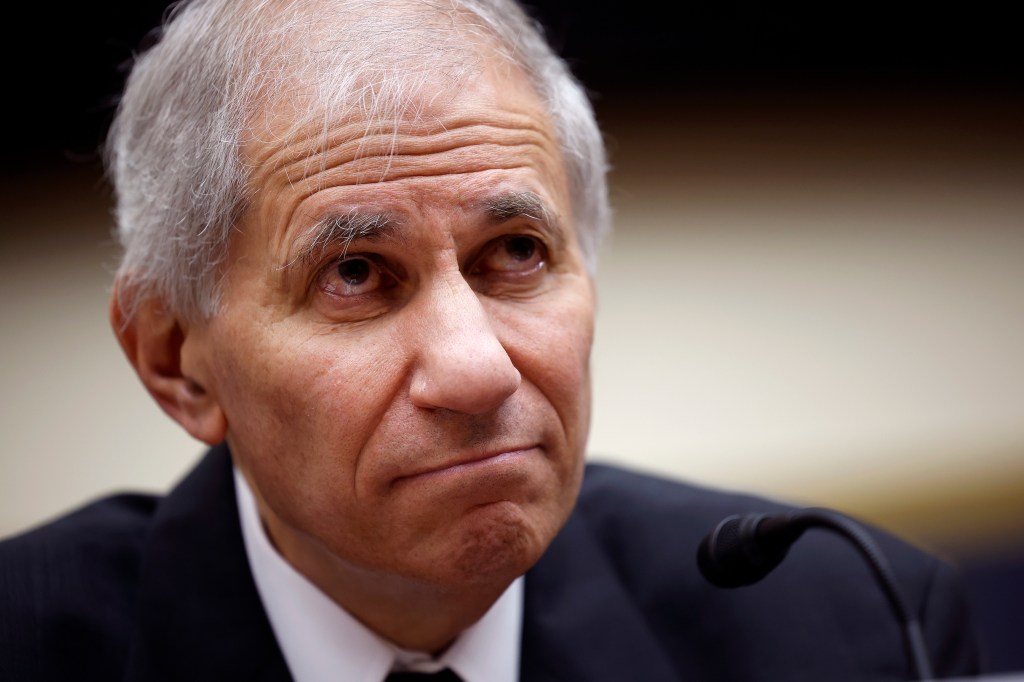Martin Gruenberg, chair of the Federal Deposit Insurance Corporation (FDIC), wants more aggressive oversight of large regional banks.
On Monday, speaking at an event at the Brookings Institution Center on Regulation and Markets in Washington, DC, he said the FDIC plans to propose a rule that would require banks with more than $50 billion in assets to provide certain information in the contingency plans they already must submit to regulators, more specifically outlining what they will do if their institution runs into trouble.
Gruenberg also spoke positively about a proposal issued by US bank regulators in late July that would require banks with more than $100 billion in assets to raise more capital to hedge against unrealized losses. And he touted a proposal that would implement a long-term debt requirement for large regional banks.
Resolution planning
He said the failure this spring of three large regional banks – Silicon Valley Bank (SVB), Signature Bank (Signature), and First Republic Bank (First Republic) – should prompt the banking regulators to focus their attention on the need for meaningful action to improve the likelihood of an orderly resolution of large regional banks, without the expectation of invoking the systemic risk exception.
Large regional banks are required to file plans that address the resolution of an insured depository institution (IDI) under the Federal Deposit Insurance Act, Gruenberg said, which is separate from the Dodd-Frank Act Title I resolution plan requirements that apply to large bank holding companies.
The FDIC will soon propose changes to the IDI plan requirements that would make them significantly more effective for these large regional banks.
The FDIC will soon propose changes to the IDI plan requirements that would make them significantly more effective for these large regional banks, he said.
The IDI Plan Rule requires banks with over $50 billion in total assets to periodically submit resolution plans to provide the FDIC with information about the bank that is essential to effective resolution planning, demonstrating how they could be resolved in an orderly and timely manner in the event of receivership.
Over the years, the FDIC has given banks feedback and guidance with respect to their plans and has considered different approaches to the planning requirements.
FDIC notice of rulemaking
“We have determined that a rulemaking is the best approach to meet those goals in a way that is both transparent and effective. To that end, the FDIC plans to issue a notice of proposed rulemaking in the near future that will be a comprehensive restatement of the rule for notice and comment,” Gruenberg said.
While Silicon Valley Bank and First Republic had been required to file resolution plans which provided basic information that was useful, far more robust plans would have been helpful in dealing with the failure of these institutions, he observed.
“While many regional banks have some outstanding long-term debt, the new proposal will likely require issuance of new debt. We expect the proposal to provide for a reasonable timeline to meet the debt requirement.”
Martin J Gruenberg, Chair, FDIC
Holding more capital
Federal Reserve Vice Chair for Supervision Michael Barr proposed a rule last month that would require banks with at least $100 billion in assets to be subject to the same scrutiny as banks with at least $700b in assets. That would mean those banks subject to the new rule would be required to hold an additional two percentage points of capital, or an additional $2 of capital for every $100 of risk-weighted assets.
Gruenberg said the agencies expect to propose that each covered bank be required to issue long-term debt sufficient to recapitalize the bank in resolution.
“While many regional banks have some outstanding long-term debt, the new proposal will likely require issuance of new debt. We expect the proposal to provide for a reasonable timeline to meet the debt requirement and to take into account existing debt outstanding,” he said.
Minneapolis Federal Reserve President Neel Kashkari favors being even tougher. Asked during a town hall whether he agrees with proposals setting higher capital requirements for banks with more than $100 billion in assets, the central bank official said, “My own personal opinion is it doesn’t go far enough. I think it’s a step in the right direction, but I would like to go significantly further.”
Regional banks under pressure
Although the banking sector has regained its footing this summer after the events in spring, the regional banking sector is still facing some pressure. Moody’s Investors Service downgraded the credit ratings of 10 regional banks last week and put the ratings of six others on review.
US bank shares dropped soon afterward, although they have been in flux since the events of the spring anyway.
A bipartisan group of lawmakers has called upon Congress and federal regulators to consider increasing the FDIC limit on deposit insurance above the current $250,000 limit for all insured depository institutions.
This story was updated on August 20













